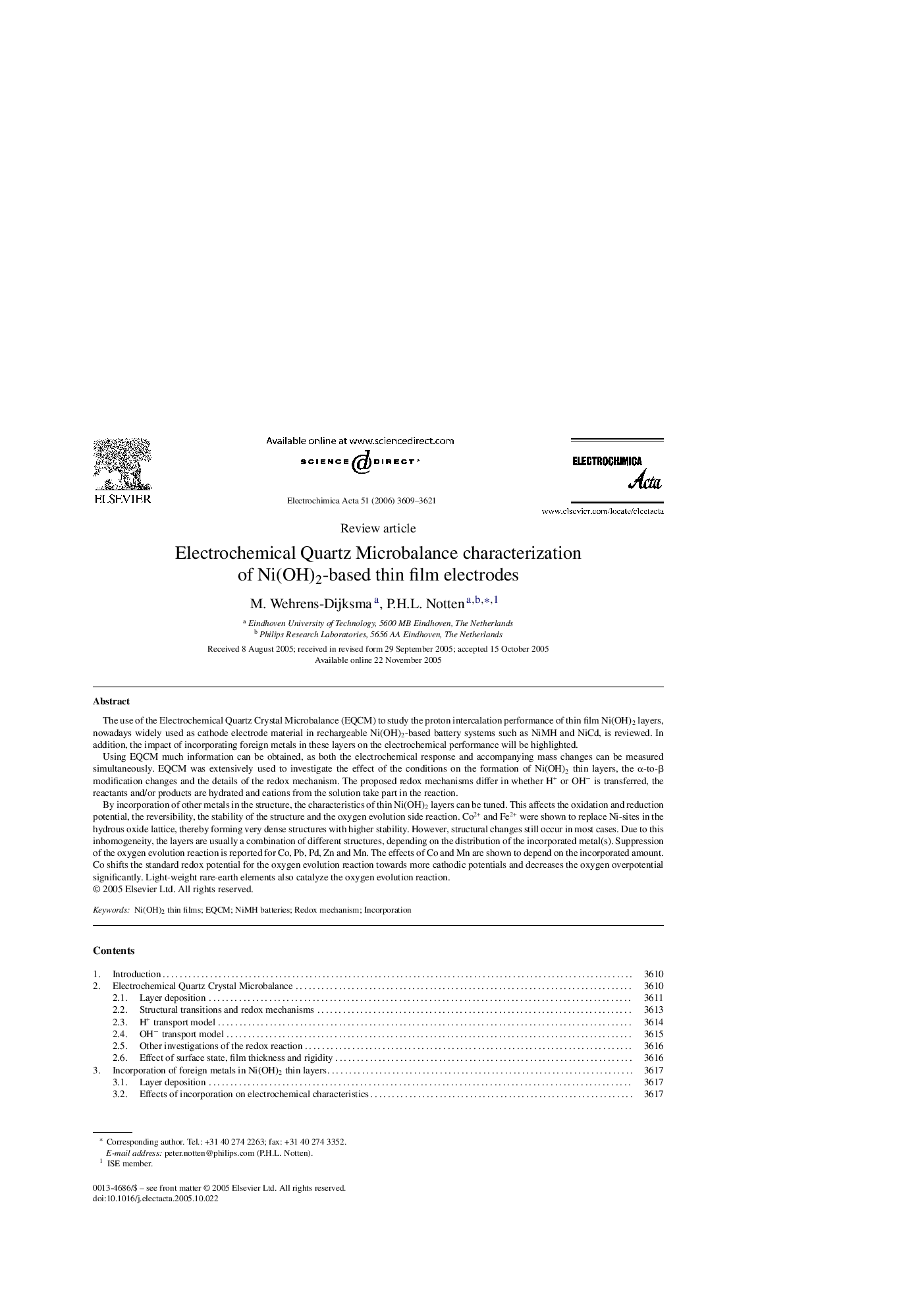| Article ID | Journal | Published Year | Pages | File Type |
|---|---|---|---|---|
| 195837 | Electrochimica Acta | 2006 | 13 Pages |
The use of the Electrochemical Quartz Crystal Microbalance (EQCM) to study the proton intercalation performance of thin film Ni(OH)2 layers, nowadays widely used as cathode electrode material in rechargeable Ni(OH)2-based battery systems such as NiMH and NiCd, is reviewed. In addition, the impact of incorporating foreign metals in these layers on the electrochemical performance will be highlighted.Using EQCM much information can be obtained, as both the electrochemical response and accompanying mass changes can be measured simultaneously. EQCM was extensively used to investigate the effect of the conditions on the formation of Ni(OH)2 thin layers, the α-to-β modification changes and the details of the redox mechanism. The proposed redox mechanisms differ in whether H+ or OH− is transferred, the reactants and/or products are hydrated and cations from the solution take part in the reaction.By incorporation of other metals in the structure, the characteristics of thin Ni(OH)2 layers can be tuned. This affects the oxidation and reduction potential, the reversibility, the stability of the structure and the oxygen evolution side reaction. Co2+ and Fe2+ were shown to replace Ni-sites in the hydrous oxide lattice, thereby forming very dense structures with higher stability. However, structural changes still occur in most cases. Due to this inhomogeneity, the layers are usually a combination of different structures, depending on the distribution of the incorporated metal(s). Suppression of the oxygen evolution reaction is reported for Co, Pb, Pd, Zn and Mn. The effects of Co and Mn are shown to depend on the incorporated amount. Co shifts the standard redox potential for the oxygen evolution reaction towards more cathodic potentials and decreases the oxygen overpotential significantly. Light-weight rare-earth elements also catalyze the oxygen evolution reaction.
